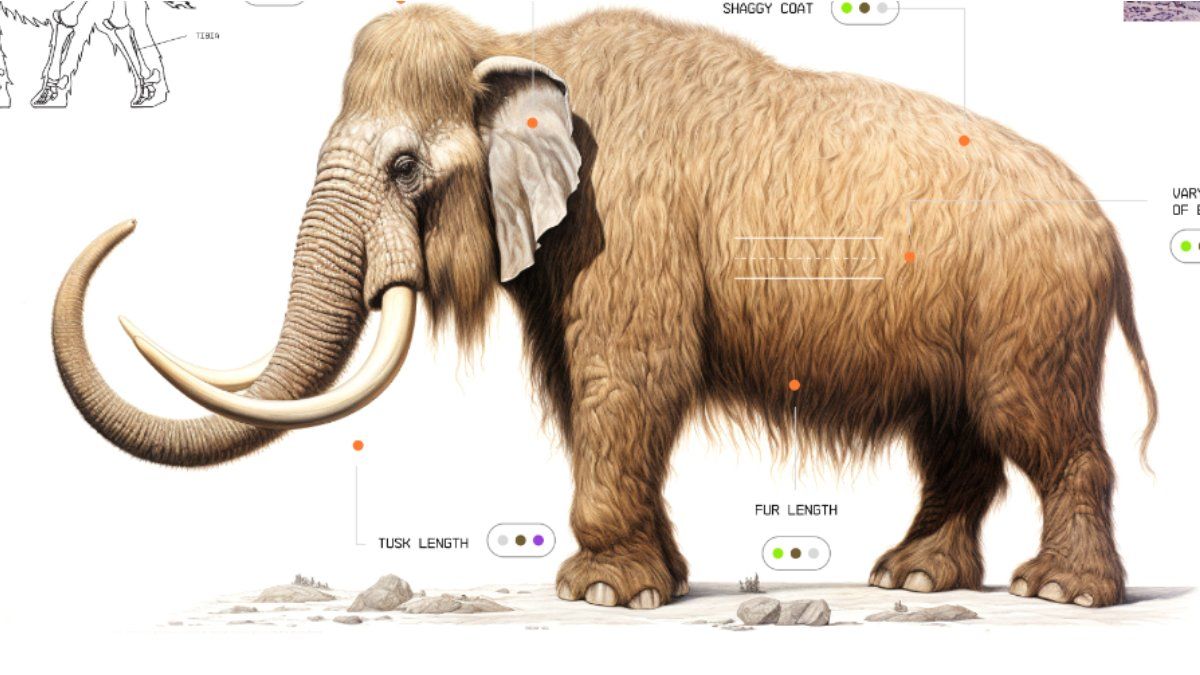The American biotechnology company called Colossal Biosciencespromised that the first offspring of mammoth will return to the world in 2028after the recent advances of the “ deextinction“, with the reconstruction of chromosomes of the mammoth Mammuthus primigenius.
Scientists claim that the first creation of this project, from combinations of synthetic biology, bioinformatics and techniques of cloningit will be a hybrid with many characteristics of the elephants and few of the mammoths.
The mammoths they disappeared 10,000 years ago, but this company has already ensured the possibility of them returning to inhabit the Land in a few years. However, it raised several questions and ethical debates regarding whether it is possible to replicate these processes in humans.
_Colossal Biosciences.png
Ben Lamm and George Church, the creators, purchased 60 partial DNA samples from different mammoths for testing.
Colossal Biosciences
The geneticist George Churchand the entrepreneur Ben Lammthey created the company Colossal in 2021, to work to eliminate the extinction of the woolly mammoth, the Tasmanian tiger (Thylacinus cynocephalus) and the dodo (Raphus cucullatus).
He dodo mammoth was a robust, flightless bird from the Mauritius Islands, which was hunted until it completely disappeared in 1681. It is recognized because its persecution became the main symbol of man-made extinction.
Another proposal aims resurrect the aurochs (Bos primigenius), the ancestor of the domestic cow, also extinct due to hunting. Scientists are “closer than people think“said the CEO of Colossal Biosciences, Ben Lamm. “It is very likely that another extinct species will come back to life before the mammoth,” added Lamm and stated that the company plans to see the birth of the first offspring of mammoth in the 2028.
What will the creation of mammoths be like?
The main idea is insert essential genes in the genome of an Asian elephant (Elephas maximus), the most similar living animal to date. The biggest problem is that unknown the mammoth genome in depth, according to claims Love Dalénpaleontologist and professor of evolutionary genetics.
These genes are associated with exclusive features of the mammoth, such as the excessive and shaggy fur, the large amount of fat, the dome-shaped head and the long, curved tusks.
Colossal bought more than 60 samples partial of DNA of different mammoths to be able to approach, identify and reconstruct them using bioinformatics, and thus synthesize and use them to modify the elephant genome. Also, through cloning techniques It would be possible to produce a hybrid embryo, which would be implanted in a surrogate mother.
Source: Ambito
I am a 24-year-old writer and journalist who has been working in the news industry for the past two years. I write primarily about market news, so if you’re looking for insights into what’s going on in the stock market or economic indicators, you’ve come to the right place. I also dabble in writing articles on lifestyle trends and pop culture news.




